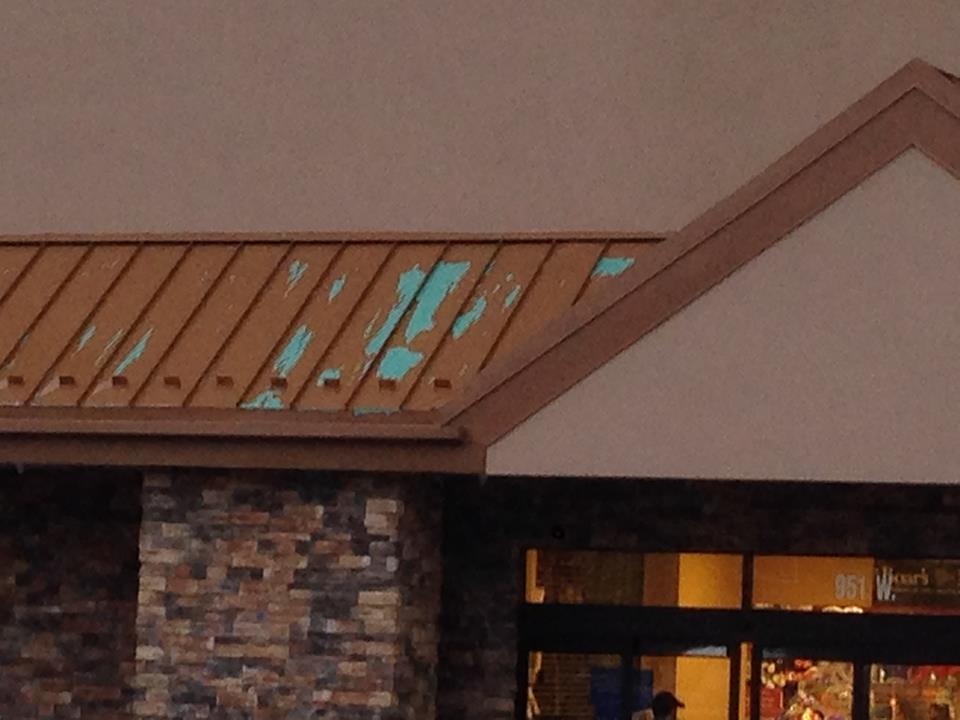
We recently came across a shopping center and couldn’t help but notice an obviously repainted metal roof that needed metal fabrication work. We found out that the roof had been repainted just two years ago, yet the paint was already peeling and chipping off.
Painting metal surfaces can be tricky, so it makes sense to carefully understand all options and pick something that will work the first time and for a long time. The best way to do this? Get to know your metal.
The characteristics of the metal you’re working with will influence how the paint adheres. There are two categories of metal: ferrous and non-ferrous. Ferrous metals contain iron, while non-ferrous metals (you guessed it) do not. The iron in ferrous metals causes corrosion and rust, which will affect the finish you apply to your metal fabrication work project.
Applying a rust inhibitor prior to painting creates a barrier that will help prime and protect ferrous metal surfaces. Rust inhibiting primers are available in water-based and oil-based formulas. While it’s nearly impossible to prevent all water and vapor from reaching metal surfaces, a rust inhibitor will significantly help reduce the moisture contact that causes metal to corrode.
Galvanized ferrous metals are the trickiest metals to paint. These metals are coated with a thin layer of zinc to help prevent corrosion, which is great in theory but presents some challenges when it comes to paint adhesion. Galvanized metal has an oily surface (applied by the manufacturer to protect the zinc) that needs to be removed prior to priming and painting. If the oil is not removed, the zinc will react with the binding in the paint, and the paint will begin to peel away. Latex topcoats are recommended for galvanized metals. Cleaned galvanized metals are also good candidates for direct-to-metal (DTM) coatings, which are a blend of half primer and half topcoat.
Ungalvanized ferrous metals should be cleaned, primed and then painted with a latex paint. Cleaning the metal surface is a key first step, in order to avoid missing a minute amount of existing rust that can lead to further corrosion. Rust can be removed by scraping, sanding, sandblasting, or using an acidic rust-dissolving solution. Follow with a rust-inhibiting primer and paint.
Non-ferrous metals such as aluminum should be allowed to weather prior to painting, due to factory coatings. A latex paint topcoat is recommended for aluminum. When properly handled, anodized aluminum is an ideal surface for painting.
Knowing your metal surface goes a long way toward a successful metal fabrication paint job. Have questions? Ask us!